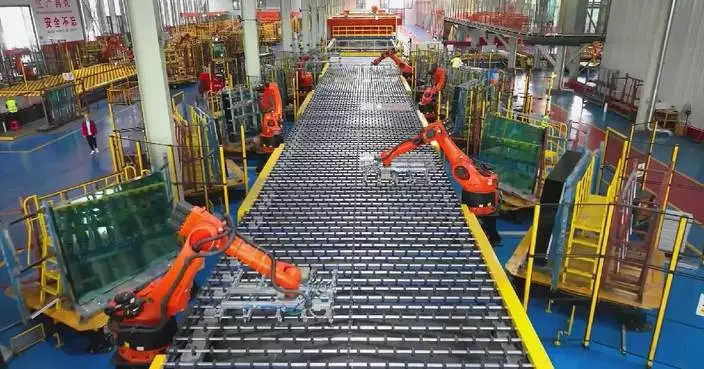Laos has decided to implement a visa-free policy for Chinese tourists starting from July 1 this year, the country's Ministry of Information, Culture and Tourism said on Wednesday.
Lasting till the end of 2024, the policy allows Chinese travelers with ordinary passports to enter and stay in Laos visa-free for up to 15 days.
It will focus on Chinese tourists accompanied by Lao travel agents which have been approved by Lao Ministry of Information, Culture and Tourism.
To further facilitate the travel experience for tourists, the Lao government is enhancing road infrastructure in transit areas and improving access roads to popular attractions.
The Lao Ministry of Information, Culture and Tourism has been working with provincial authorities and tourism stakeholders along the China-Laos Railway to upgrade tourist attractions with higher standards while installing directional signs at attractions along the transit routes.
The ministry is also working with private investors to explore and develop more tourist attractions and facilities to accommodate visitors.

Laos to offer visa exemption for Chinese visitors from July
Haiyang, a seaside city in east China's Shandong Province, is aiming to build itself into the country's leading commercial aerospace center, as seeking high-quality development has become a nationwide pursuit.
Haiyang made national headlines as the commercial launch vehicle CERES-1, carrying four satellites, blasted off from the waters surrounding the city in early September last year. What's different about this mission was that the rocket was lifted off from a sea-based platform.
The platform, named Oriental Spaceport, is China's first multi-purpose vessel for maritime rocket launch and recovery. Its stable hull design and cutting-edge technical support enable the rocket to be launched stably from the sea and accurately enter the predetermined orbit.
"It has been especially designed, with a length of 160 meters and a width of 40 meters. The deck area is more than 4,000 square meters, equivalent to the size of 40 standard basketball courts. The main deck has been strengthened with a load-bearing capacity of 20 tons per square meter, which can bear the weight of more than a dozen family cars. In terms of capability, it can carry multiple rockets each time," said Sun Jianjun, leader of the Oriental Spaceport project.
Since China's first seaborne rocket launch was completed with a Long March-11 carrier rocket blasting off from Oriental Spaceport in 2019, the offshore platform has carried out 11 missions of launching four types of rockets, successfully sending a total of 61 satellites into space, with a success rate of 100 percent.
The Oriental Spaceport marks a milestone in the sea-based launch for China's civil and commercial space sector, and has also helped the coastal city embark on a unique development path with the aerospace industry as the priority.
"The rocket launched in 2019 went to the sea from this dock under my feet, in realization of the first sea-based rocket launch in Chinese history. After that, we were inspired to build an aerospace industry in Haiyang," said Zhang Hua, deputy general manager of the Oriental Spaceport.
From an unknown seaside city to a very place gathering high, sophisticated and advanced aerospace enterprises, Haiyang has been making efforts to attract related companies.
"This is the industrial layout of Oriental Spaceport. We've built not only a physical platform, but also an industrial platform and an entrepreneurial platform [for enterprises]," Zhang said.
With the "golden signboard" of seaborne rocket launch, Haiyang has broken through the conventional industrial development mode, discarding the old way of building industrial parks and relying on taxes.
The city has turned to investing commercial aerospace enterprises with growth potential, reducing costs for key manufacturers, and providing better research and development platforms for scientific research teams. This development path has achieved remarkable results.
On January 11 this year, the Yinli-1 (YL-1), or Gravity-1 commercial carrier rocket, developed by Haiyang-headquartered startup Orienspace, was successful sent into space from the sea-based platform.
This rocket not only refreshed many records including the world's largest capacity of solid-propellant launch vehicle and China's largest capacity of private commercial launch vehicle, but also proved the industrial cluster effect of Oriental Spaceport.
"A number of high-tech enterprises here can provide us with some key equipment support. For example, this launch pad where we stand and the turnover rack over there were both produced by local enterprises, which reduced our development costs. Besides, the Haiyang government also provided us with a lot of financial support, so that we could develop a better team, resulting in breakthroughs in key technologies of rocket launch," said Zhang Tao, chief designer of Yinli-1.

Eastern coastal city aims at building commercial aerospace center with industrial cluster effect










